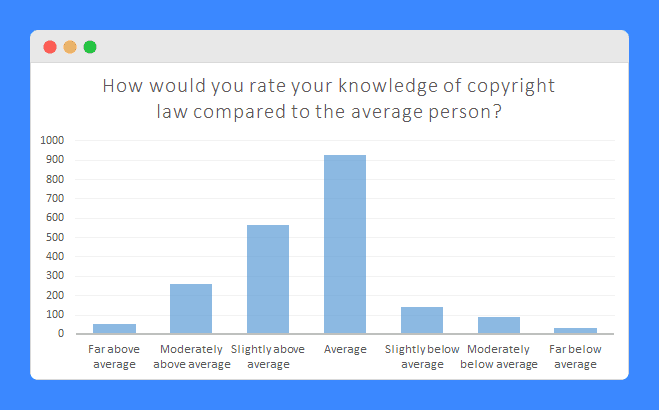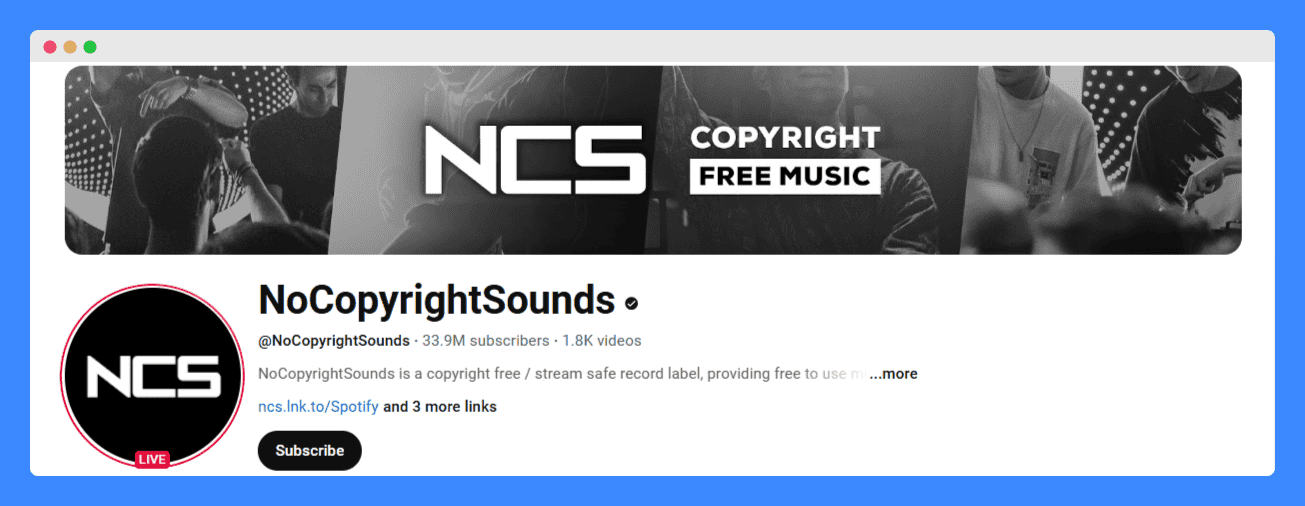Copyright infringement may lead you to acknowledge severe consequences. It affects not only your reputation but also your financial stability, as you may be liable to pay heavy fines or penalties.
One of the critical mistakes marketers and advertisers make when promoting their solutions is that they get careless with intellectual property.
Just because the content is easily accessible to you, it doesn’t mean that it’s available for commercial distribution or marketing purposes.
Therefore, educate yourself about the copyright laws and the legal repercussions that follow. It enables you to market your solutions smartly and increase your brand awareness without having to encounter potential legal risks.
To get you started, we will cover the dos and don’ts of copyright for marketers and advertisers representing different industries.
So, without further ado, let’s start.
Table of Contents
What is Copyright?
Before we talk about the dos and don’ts of copyright in marketing and advertising, let’s explore the concept of copyright first and learn about it.
Copyright pertains to intellectual property that safeguards the ownership rights of original creators or developers of digital or tangible products. The copyright takes effect the moment you express your original work in a tangible form.
Copyright can cover a wide range of products or services, such as software, books, paintings, illustrations, movies, music, and so on.
The core objective here is to enable originators to benefit from their creation and prevent others from taking advantage of their hard work through unfair means.
Unfortunately, not many are aware of copyright laws and how they work. It’s one of the reasons unintentional infringements take place.

Copyright infringements may lead you to face legal action initiated by the property owner. Awareness about copyright laws and fair use is a must, allowing you to save yourself from such unpleasant occurrences.
How Does Copyright Take Effect?
Copyright takes effect when you meet two criteria. First, anything can have a copyright as long as it represents original work. A copy of something that already exists or a replica is not eligible.
You may think, what about research? What already exists often inspires something new. There’s nothing wrong with taking inspiration from someone else’s work as long as a substantial part of what you come up with encompasses your thought process and originality.
Second, a copyright will take effect when something takes a tangible form. For example, you can’t claim to hold a copyright to an idea or an expression.
Implications of Copyright in Advertising and Marketing
Content plays a key role in marketing or advertising products or services. It helps you convey your message and attract a relevant audience.
Around 82% of businesses leverage content marketing to promote their solutions and engage the intended audience segments.
By sharing relevant content, you persuade your target audience to learn more about your business and how your products or services serve as fitting solutions to their problems.

To market your solutions to the right audience, you may need attention-grabbing text-based and visual content. Creating it from scratch can be a complex and time-consuming activity. Furthermore, you may not have enough resources to maintain a decent content output.
It’s one of the reasons content marketers often resort to repurposing or reusing content already available. The problem is that they may not be the owners of the content they use, which puts them at risk of copyright infringement.
Even when you choose to create content from scratch, you may still encounter such issues due to accidental plagiarism.
We all conduct our research before creating content and take inspiration from what’s already published. Your ideas or thought process may align with someone else’s. The only difference is that they published their piece of content before you did.
The same goes for advertisers. The components of the ads they put up for display may violate copyright laws. For example, you may use an audio tune or background music in your ad that is someone else’s property.
Or when designing your email marketing campaign process, understanding copyright implications ensures that both text and visual content align with legal standards and enhance campaign effectiveness.
Now, an easy way to avoid such unpleasant situations is to just look for copyright-free content that’s available for free.

However, it’s just one of many things you should consider to protect yourself from copyright violations and the legal consequences that follow.
Dos and Don’ts of Copyright for Marketers and Advertisers
Going through all copyright laws and understanding the regulations can be daunting. To make things easy for you, we have come up with a list of dos and don’ts for you to carry on your marketing and advertising activities without having to worry about reputation management or legal repercussions.
Let’s talk about the dos of copyright for marketers and advertisers first.
1. Do Come Up With Original Work
The best way to avoid copyright infringement is to stay original. You can take inspiration from what’s already available. However, the end product should be your original creation.
You should use your thought process and creativity to come up with your marketing messages, as one size doesn’t fit all. What works for someone else may not work for you. So, there’s no point copying their content material to promote or advertise your solutions.
The best course of action is to know your customers and let transactional segmentation fuel your marketing and promotional strategies.
2. Do Leverage Copyright-Free Resources
Creating content material from scratch can be a hassle. It consumes a lot of time and requires a team of competent human resources. It may not be a problem for conglomerates. However, it can be a huge challenge when you have just started your entrepreneurial journey.
A viable solution to this problem is to leverage available content material created by others. However, you need to ensure that it’s copyright-free.
You can find a ton of useful copyright-free material online that you can use in your marketing campaigns or ads, such as images, videos, and soundtracks.
Using such material will save you a lot of time and fuel your marketing or advertising activities without putting you at the risk of copyright infringement.
3. Do Seek Consent
Seeking consent from the copyright holder can make you stay out of trouble. All you need to do is reach out to them and ask them if they allow you to repurpose or reuse their work.
You must have come across many platforms where you can find stock images, videos, and soundtracks. You can access them for free, but the commercial use of the content material isn’t permissible. However, there’s no problem if they provide you with their consent.
4. Do Give Credit to the Originators
When you use someone else’s work after getting their consent or leverage free resources, you should always remember to give credit to the original creators. It’s an ethical thing to do and helps you grow your connections.
When you give credit, it shows that you appreciate the owner’s efforts. It’s a nice gesture that enables you to build lasting relationships and makes it easier for you to get the owners’ consent in the future.
5. Do Maintain a Record of Consent
There’s nothing wrong with being trusting and taking someone’s words at face value. However, when you’re dealing with legal implications, you must consider being on the safe side at all times.
Therefore, you should maintain a record of consent and permission to reuse or redistribute content material.
The formal way of doing this is to sign an agreement with the original creators of the content material. However, if you choose to keep things casual, you should consider reaching out to originators of information via email.
The response you get from them may serve as proof of consent and protect you from trouble in case the original creators go back on their word due to unforeseen reasons.
6. Do Benefit from Fair Use
You can use copyrighted content material for your marketing or advertising campaigns without fearing infringement. You just need to make sure that you embrace the fair use tactics.
Fair use allows you to use copyright resources without having to ask for consent from the copyright owners.
However, fair use regulations may vary from one region to another. To avoid running into any legal problems, you should understand the fair use policy and the terms that apply in your vicinity.
Now that we’ve covered the dos, let’s talk about the don’ts of copyright for marketers and advertisers.
7. Don’t Mistake Easy Accessible Content to be Copyright-Free
A common mistake is thinking copyright owners always paywall content. Not everything accessible to you online is copyright-free.
Copyright owners can make their content or learning resources available online to educate you about certain topics. It doesn’t mean that they are authorizing you to reuse or redistribute it without asking for their consent.
Therefore, you must check copyright information. If you intend to use the content, you must reach out to the copyright holder and ask for their permission to do so.
8. Don’t Think Giving Credit Will Save You from Infringement
Giving credit to copyright owners doesn’t make up for their consent. You still need their permission to reuse or redistribute their property.
For example, you may think that reaching out to copyright owners and asking for their permission can be time-consuming. So, I would rather use their content material and credit their work.
Another situation is when they don’t allow you to use their property or content material. You may think that giving credit to originators would suffice and save you from potential harm caused by infringement.
In both scenarios, you’re violating the copyright law and can get into legal trouble. So, you must follow the proper procedure and ask for copyright owners’ permission before attempting to use their property.
9. Don’t Ignore Takedown Requests
You may acknowledge takedown requests from copyright owners from time to time. They make these requests in response to alleged copyright infringement.
Even though you follow proper procedures to avoid infringement and are aware of the fair use policy, ignoring takedown notices is unwise.
There may be incidents where copyright infringement is purely accidental or unintentional. So, the copyright owners may have a legitimate reason to issue a takedown notice.
The best course of action in this case is to delete the content as soon as you receive the notice to avoid the negative consequences.
10. Don’t Think Content Deletion Fixes the Problem
Once you receive a takedown notice on your marketing or advertising campaigns, the best you can do is get rid of the content material. However, it doesn’t always protect you from the risk of receiving penalties.
The copyright owners can still take legal action against you, which may lead to heavy fines. It may seem like an overkill, but after receiving a takedown notice, you should reach out to the originators of the information you used.
Apologize for what happened and assure them that you meant no harm. Tell them that it was an accidental infringement and you will be more careful in the future.
It can turn the odds in your favor and allow you to grow your connections. You may have gotten off on the wrong foot. Still, a simple apology can transform a negative incident into a positive experience and help you build lasting relationships with copyright owners for your future campaigns.
11. Don’t Think Disclaimers Protect You from Infringement
Many people think that adding a disclaimer stating that they’re not the owners of the content material will protect them from infringement.
It’s a nice gesture that you are not taking credit for someone else’s work. However, you will still benefit from it without the copyright owner’s consent. So, there’s a high chance that you may acknowledge adverse consequences.
12. Don’t Skip the Terms of a Creative Commons License
A Creative Commons License enables you to use copyrighted content material and useful resources under certain circumstances. The copyright owner still holds all the rights, but you can benefit from their property.
However, you should carefully go through the terms and conditions that apply. These conditions may vary in different regions. So, you should have a clear understanding of the ones that apply to you before you attempt to use copyright material.
Over to You
Using copyrighted material for marketing and advertising campaigns is a straight-up bad idea. Even though you can leverage the content material under certain situations, there’s a high risk associated with the use of someone else’s property.
However, if you still choose to use copyrighted content for your marketing and ad campaigns, we have covered the dos and don’ts for you in this article.
Following the recommendations will help you keep the risk of infringement at a bare minimum and avoid any legal repercussions that follow.


